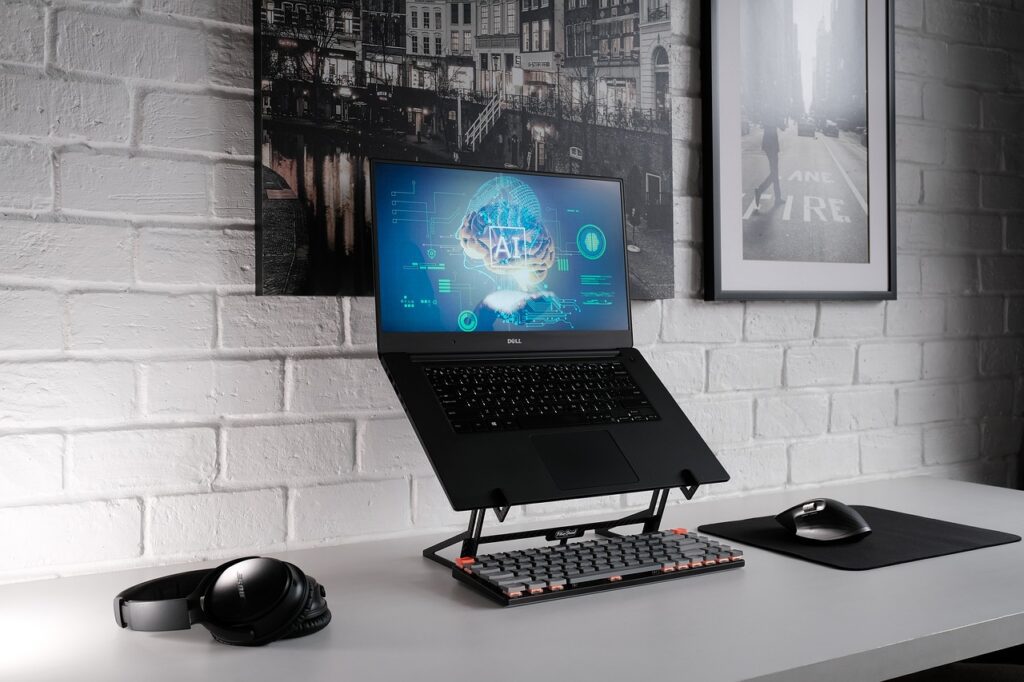How Artificial Intelligence is changing the Way We Live and Work
Artificial Intelligence (AI) has become an essential part of our daily lives, from personal assistants to self-driving cars. Its significant impact on the business sector cannot be ignored. Businesses that fail to adopt AI risk falling behind in today’s competitive market. In this blog post, we will explore the future of business with AI. AI refers to machines that can complete tasks that typically require human intelligence and reasoning. These machines can learn autonomously from their experiences and improve their output over time. AI has a rich history dating back to 1956, when researchers first began exploring the concept. Since then, there have been significant advances in the field, including machine learning and natural language processing. Collaborative Intelligence is the concept of humans and machines working together to achieve a common goal. AI empowers businesses to tap into the potential of smart automation, enhance human abilities, and attain elevated levels of productivity, efficiency, and innovation. By blending human intuition and imagination with AI’s analytical prowess, companies can unlock fresh possibilities and propel profound changes. AI can offer significant advantages, but it is not a one-size-fits-all solution. Businesses need to analyze their specific needs and consider the challenges and benefits before implementing AI. Businesses need to develop an AI strategy that aligns with their objectives. Considerations include defining AI goals, choosing industry-specific solutions, selecting appropriate technical resources, and assessing the ethical implications of AI. AI-powered solutions can open up new opportunities for businesses by optimizing processes, reducing costs, and increasing accuracy and speed. It can transform business models by allowing companies to experiment with new products and services. Businesses must abide by ethical practices when implementing AI. It should be designed to enhance human capabilities, without causing harm or discrimination. There should be transparency in the decision-making process of AI algorithms. Challenges include concerns over job displacement, lack of trust and transparency in AI, and technical limitations. On the other hand, AI’s potential benefits include precision and accuracy, time and cost savings, machine learning, continuous improvement, and personalization. Different industries can benefit from tailored AI solutions. AI is poised to disrupt and transform various sectors, revolutionizing the way we work and interact. Let’s explore the future impact of AI in key industries: AI’s potential extends beyond current applications. Innovations and trends that are shaping the future of AI for businesses include: Conversational AI powers chatbots and virtual assistants, enabling humans to interact with machines via natural language. AI and the Internet of Things are expected to produce powerful insights and automate decision-making processes. AR combines real-world images with computer-generated content, creating new opportunities for businesses to interact with customers. Digital Twin is the virtual replica of a physical object or system, which helps businesses to analyze performance, improve processes, and forecast future outcomes. According to a report by McKinsey, AI could potentially deliver an additional global economic output of around $13 trillion by 2030. AI will change the landscape of work, automating routine tasks and augmenting human capabilities. While it may displace some jobs, it will create new opportunities and require reskilling and upskilling efforts to adapt to the evolving job market. The AI ecosystem includes various players, from tech giants to startups and government bodies. Some of the key players in the AI industry are IBM, Google, Microsoft, Amazon, and Facebook. Venture Capitals have invested heavily into AI. It is expected to double every 3 years with a predicted global spend of over $52 billion by 2024. Governments and industry stakeholders must collaborate to create ethical regulations and policies that encourage trustworthy AI development and deployment. As AI becomes more integrated into our lives, concerns about privacy and data protection arise. Striking the right balance between innovations and safeguarding personal information is crucial. Robust data anonymization techniques and privacy regulations play a vital role in mitigating privacy risks. Conclusion: The future of AI holds immense promise, transforming industries, shaping our work lives, and addressing important ethical considerations. With emerging trends like explainable AI, reinforcement learning, and edge computing, we are entering an era of innovation and discovery. By embracing the potential of AI responsibly, we can navigate the challenges and unlock a future where humans and machines collaborate for the betterment of society.





